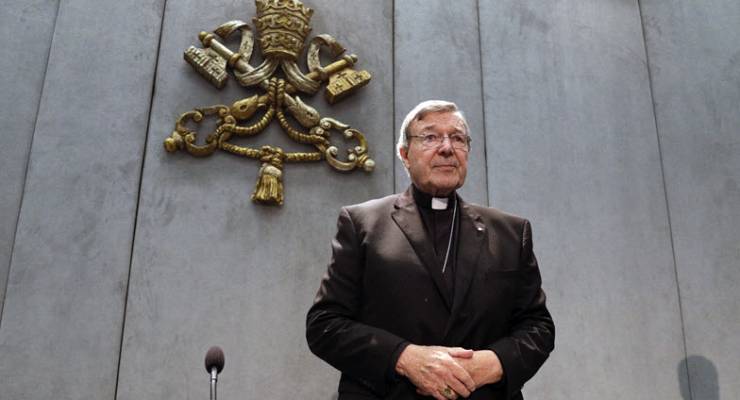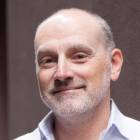
So far as the law is concerned, the present position regarding Cardinal George Pell is that he did not do anything.
That statement is technically correct in relation to the various unproven allegations that he committed criminal acts himself.
It is also literally correct, according to the Royal Commission into Institutional Responses to Child Sexual Abuse, in terms of what he did to protect children from sexual predators within his church, when he was in a position and had the obligation to do so.
That is the unambiguous finding of the previously secret parts of the report by the royal commission, made public because Pell’s own criminal trials are at an end.
Here’s what the commissioners found, having had the benefit of Pell’s own sworn testimony.
- In 1973, Pell was an assistant priest in Ballarat Diocese. He shared a house for about 10 months in Ballarat East with Gerald Ridsdale, who has since admitted to sexually assaulting 65 children but no doubt had many more victims than that over the three decades the church allowed him free reign. Pell knew that Ridsdale had been taking groups of boys away on overnight camps. The commission found that Pell “turned his mind” to the prudence of this because of the risk of sexual abuse or at least gossip about it; “by this time, child sexual abuse was on [Pell’s] radar” in relation to Ridsdale. He took no action. Ridsdale remains in prison, having been sentenced five times for child rapes.
- In 1989, Pell was an Auxiliary Bishop of the Archdiocese of Melbourne (which includes 216 parishes and 331 Catholic schools). He received a list of extremely serious allegations against Father Peter Searson, one of the worst serial sexual offenders in the whole sordid history of Catholic institutional abuse that the commission uncovered. The commission found that Pell’s evidence, that he had been deceived by the Catholic Education Office because it did not tell him what it knew about Searson’s crimes, was “implausible”. It did not accept that Pell was deceived. It also found that “it ought to have been obvious to him at the time” that action was needed, that he “should have advised the Archbishop to remove Father Searson and he did not do so.” Searson continued his predation for another seven years after this.
- In 1996, Pell was Archbishop of Melbourne and became aware that Father Wilfred Baker, another serial paedophile, would probably be charged in relation to a historical sexual assault in 1965. Pell had authority to remove Baker from his parish at North Richmond, which had a primary school attached to it, but did not do so until a year later. Baker was later convicted and sentenced to four years.
- In 1993, Pell (then a bishop) participated in a meeting of an advisory board that dealt with employment of priests. The meeting accepted the resignation of Father Nazareno Fasciale, on grounds of ill health, and did not record any other matters relating to Fasciale. In fact he was resigning because he had admitted to multiple sexual abuse offences dating back to the 1950s. The commission found it “inconceivable” that this was not discussed at the meeting, and heavily criticised the cover-up. Fasciale died in 1996, his crimes unreported, and was given a Requiem Pontifical Mass.
- Pell was also part of a meeting of the same body in 1995 that accepted the resignation on health grounds of Father David Daniel. The commission found that the real reason was multiple allegations of child sexual abuse, known to many at the meeting and “probably” known to Pell. It found that all those present at the meeting, including Pell, knew of the true reason and participated in an act that was misleading. Daniel was later convicted of multiple offences.
- Arguably the most culpable leader of the institutional cover-ups was Archbishop Frank Little (Pell’s immediate predecessor who was Archbishop between 1974 and 1996), who never took any meaningful action against the many predators who operated in plain sight under his control. Pell, who reported to Little, was among many senior priests, the commission found, who had the capacity and opportunity to persuade him to take action on matters known to them, and “either did not do so or were ineffectual”. The commission considered their inaction to be “a series of individual failures by those priests”, in line with what it was satisfied was “a prevailing culture … of dealing with complaints internally and confidentially to avoid scandal to the Church”.
The commission was scathing of the Catholic Church’s handling of the sexual violence committed over 40 years by insanely large numbers of its own priests against untold numbers of children whose welfare was its direct legal, moral and spiritual responsibility.
The statistics are nauseating. Having considered evidence from nearly 10,000 witnesses in relation to 3489 institutions, the commission found that 58% of reported sexual abuse took place in religious institutions and 61% of these were Catholic. Four individual Catholic orders had sexual abuse allegations made against more than 20% of their members, including 22% of the Christian Brothers and 40% of St John of God Brothers.
Two institutional conclusions are unavoidable: there was something horribly diseased about the Catholic Church because it literally harboured covens of predatory paedophiles; and it responded to what it knew it was enabling by doing everything it could to cover it up.
That the church even continues to exist after this horror has been exposed is a mystery to me, but I accept that that’s a matter for its adherents to reconcile to themselves. That it continues to enjoy the protection of the state with charitable tax-free status and government funding of its schools, that I have a say in and I cannot see an argument that such an institution should ever be handed the public trust again.
As for Pell, I have nothing to say. The commission’s findings speak eloquently enough of everything he did not do, in all the long years when he was in a position to do something.








Crikey encourages robust conversations on our website. However, we’re a small team, so sometimes we have to reluctantly turn comments off due to legal risk. Thanks for your understanding and in the meantime, have a read of our moderation guidelines.